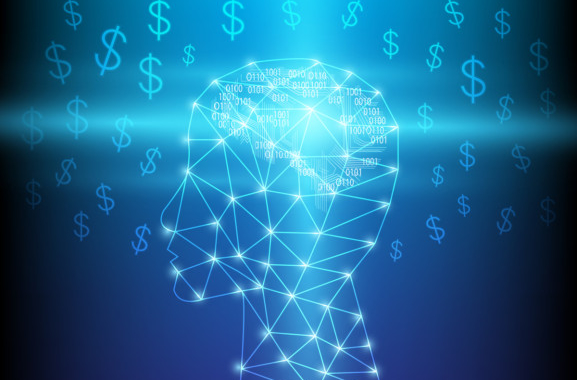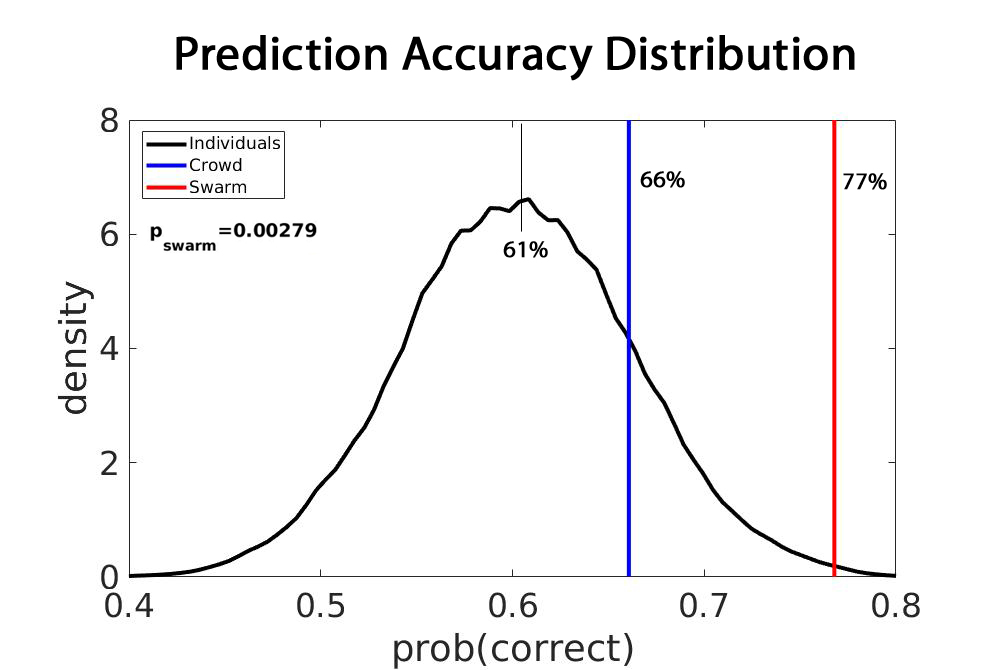LONG-TERM STUDY WITH OXFORD SHOWS TRADERS USING SWARM OUTPERFORM ACROSS FOUR MAJOR INDICES
Can the Swarm platform be used to amplify the forecasting accuracy of financial professionals? That’s a question that a team of researchers at Oxford University and Unanimous AI tackled through an academic study that was presented at the at the Ubiquitous Computing Conference (UEMCON) held at Columbia University in New York City.
.
The sixteen-week study tasked small groups of financial traders with forecasting or the movement of four major market indices each week – SPX, GLD, GSX and Crude Oil. The objective of the study was to compare the forecasting accuracy of (a) individual traders, (b) “crowds” of traders who combed their insights by majority vote, and (c) small groups of traders who amplified their intelligence by forecasting together within the Swarm platform. In this way, researchers aimed to reveal which method generated the best forecasts – individuals, crowds, or swarms.

The financial traders met every Tuesday in the Swarm platform to register their collective forecast for the movement, both in direction and amplitude, of each of the four indices over the next 72 hours. The results were scored against the closing price on Friday afternoon. Because the traders also registered their own individual forecasts, researchers were able determine how the Swarm AI system performed against the average financial trader, as well as the crowd-based vote. In this way, researchers compared three distinct methodologies for eliciting optimal forecasting strategy from a group of experienced financial forecasters.
The Swarm platform enables groups to generate accurate forecasts by combine their knowledge, experience, and intuition with real-time Swarm Intelligence algorithms. An example of a group converging upon an answer in the Swarm platform is shown below. Each magnet represents the time-varying input from a single financial trader as the group deliberates and converges on a solution. In this instance, the 3-day forecast was that Crude Oil increase in value over the three day period by an amount less than 4%.
.

While the above question is posed very simply with just four discrete options, the Swarm platform processes the complex interactive behaviors that produce the final answer. The image below is a Support Density Plot showing the real-time behaviors processed by the AI engine as the system converges upon an optimized solution.

So, how did the system perform? The chart below compares the accuracy of (i) individual participants, (ii) the “crowd” deciding by majority vote, and (iii) the interactive “swarm” moderated by AI algorithms. As shown, when using Swarm the financial traders generated accurate forecasts 77% of the time. This was a significant improvement over the crowd at 66% and the individuals at 61%. It’s important to note that the results from the individual participants were bootstrapped 10,000 times in order to determine whether or not this amplification of intelligence for the Swarm AI system could be explained away by random chance. This analysis a highly significant result (p=0.002%).
.
Breaking down these results further, the chart below shows the amplification of intelligence generated by the Swarm platform for each of the four different incidences forecast. As shown, the strongest result was for forecasting Crude Oil, where usage of the Swarm platform amplified accuracy by 43% across the 16 week testing period.
.
The value of amplified forecasting accuracy in financial markets is clear. What is most interesting, however, is that this result was achieved without needing to train AI algorithms on any historical financial data. Instead, this research suggests traders can amplify their own wisdom and intuition in highly significant ways using swarm intelligence algorithms.
.
The financial forecasting accuracy demonstrated above is being replicated in other fields. Researchers at Stanford Medical School published a similar study evaluate if radiologists using the Swarm platform could increase the accuracy of pneumonia diagnoses. In a breakthrough that has been nominated by SXSW for Medical Innovation of the Year, researchers found that small groups of doctors working together using Swarm reduced their errors by over 30% as compared to traditional methods.
.
This same technology is now available to businesses teams. If your team is interested in leveraging the power of Swarm for business forecasting, strategic decision-making, or optimized market research, you can learn more the Swarm platform
here.
.

.
Want to learn more about our Swarm AI technology? Check out our TED talk below…








